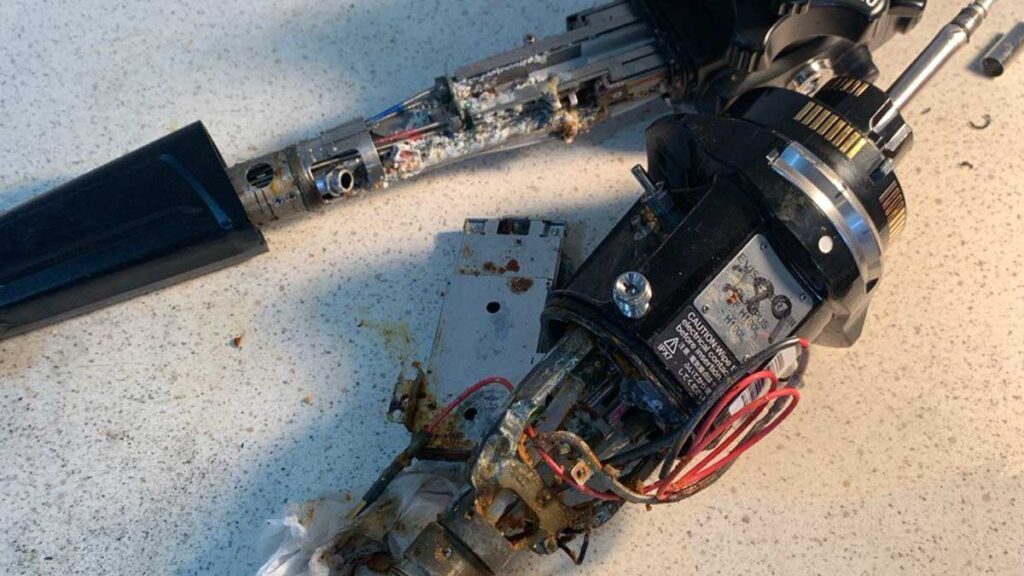Water damage is one of the most serious and costly issues affecting flexible endoscopes, and it typically results from internal leakage caused by improper reprocessing, handling errors, or compromised seals.
When fluid enters the internal components of an endoscope, it can cause:
- Corrosion of internal wiring and electronics
- Failure of image or light transmission
- Malfunctioning angulation systems
- Complete device failure

Common Causes of Fluid Ingress:
- Damaged or worn O-rings and seals
These are critical barriers that prevent water from entering sensitive areas. Over time, they can degrade or become dislodged, leading to leakage. - Failure to perform leak testing before cleaning
Skipping or incorrectly performing leak tests allows moisture to enter unnoticed during manual cleaning or automated reprocessing cycles. - Cracks or punctures in the insertion tube, bending section, or distal tip
Even small tears or abrasions can create a direct path for fluid intrusion. - Improper drying or storage after reprocessing
Retained moisture can seep into vulnerable areas and cause long-term internal damage.
Signs of Water Damage in Endoscopes:
- Blurry or distorted image
- Dim or flickering light output
- Inconsistent angulation or stiffness
- Error messages from processor units
- Visible fogging in the lens
Preventing Water Damage:
- Always conduct a leak test before every cleaning cycle
- Inspect endoscope surfaces for cuts, dents, or peeling
- Replace damaged seals and components promptly
- Use certified technicians for repairs and maintenance
- Ensure scopes are thoroughly dried before storage
If you suspect water damage inside your endoscope, immediate assessment and repair are critical to avoid permanent damage. Delayed action can lead to more extensive internal corrosion and higher repair costs.